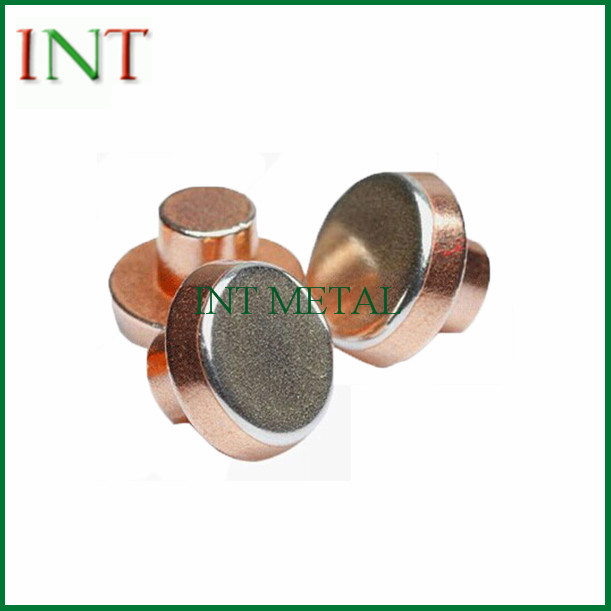Understanding Contact Rivets: Essential Components for Secure Connections
2025-03-11
In various industries, ensuring secure and reliable connections between components is critical for both performance and safety. Contact rivets, small yet incredibly important fasteners, play a key role in this process. These rivets are designed to provide permanent connections between two or more pieces of material, making them indispensable in everything from electronics to automotive and manufacturing applications. In this blog, we will explore what contact rivets are, their advantages, and their uses in different industries.
What Are Contact Rivets?
Contact rivets are specialized fasteners used to create electrical connections between two pieces of metal or other conductive materials. Unlike traditional rivets, which are designed purely for mechanical fastening, contact rivets serve the dual purpose of securing components while also enabling the transmission of electrical current. These rivets are commonly made from materials like copper, brass, or steel to ensure optimal conductivity.
The most common application of contact rivets is in electrical systems, where they are used to ensure a reliable and stable electrical connection. The rivet’s conductive properties allow it to act as a bridge between different parts of a circuit, ensuring that electricity can flow uninterrupted between components.
Key Advantages of Contact Rivets
Contact rivets offer several advantages that make them ideal for applications where both mechanical stability and electrical conductivity are required. Let’s dive into the key benefits of using contact rivets.
1. Reliable Electrical Conductivity
One of the primary reasons for choosing contact rivets is their ability to conduct electricity efficiently. Unlike other types of fasteners, contact rivets are made from materials that promote excellent electrical conductivity. Copper and brass, commonly used in the production of contact rivets, have high conductivity, ensuring that the rivet can transfer electrical signals or power between components without significant resistance or power loss.
2. Permanent and Secure Connections
Contact rivets are known for providing permanent, strong, and secure connections. Once installed, they are designed to resist loosening or failure over time, which is essential in applications where vibration, temperature changes, or mechanical stress may be present. The strength of the rivet ensures that the connection remains intact, even in challenging environments.
3. Space-Saving Design
Contact rivets come in various sizes and designs, making them suitable for a wide range of applications. Their compact nature allows for space-saving, which is especially important in industries like electronics where saving space on printed circuit boards (PCBs) or within small enclosures is crucial. Contact rivets can fit into tight spaces without compromising their functionality.
4. Durability
Due to the materials used in manufacturing contact rivets, they are highly durable and capable of withstanding harsh conditions. Whether exposed to high temperatures, corrosive chemicals, or physical wear, contact rivets are designed to remain intact for long periods without degrading. This makes them ideal for industrial and automotive applications, where durability is essential for safety and performance.
5. Easy Installation
Contact rivets are relatively simple to install compared to other fastening solutions. They can be installed using various methods, such as riveting machines or manual tools, depending on the specific application and the materials involved. Once installed, they form a strong and permanent bond, ensuring the reliability of the electrical connection.
Applications of Contact Rivets
Contact rivets are used in a variety of industries and applications where both mechanical and electrical connections are needed. Below are some common applications where contact rivets play a vital role:
1. Electronics
In the electronics industry, contact rivets are widely used in the production of circuit boards, connectors, and electronic devices. These rivets provide the necessary electrical connection between different components while securing them in place. For example, contact rivets can be found in devices like computers, cell phones, and audio equipment, where stable electrical connections are essential for proper functionality.
2. Automotive Industry
Contact rivets are also commonly used in the automotive sector. They are used to create electrical connections between parts of the vehicle, such as in wiring harnesses, ignition systems, and electrical components. Contact rivets ensure that these connections remain secure and conductive, contributing to the overall reliability and safety of the vehicle.
3. Industrial Equipment
In industrial settings, contact rivets are used to connect various electrical components in machinery and equipment. They ensure that the electrical connections within motors, sensors, and control panels are stable and efficient. Their durability makes them ideal for machinery that operates in demanding environments, where failure is not an option.
4. Aerospace Industry
The aerospace industry relies heavily on contact rivets for both mechanical and electrical connections in aircraft systems. Contact rivets are used in aircraft wiring, control panels, and other critical systems where reliability and durability are paramount. In such high-stakes environments, the performance of contact rivets is crucial for the safety and functionality of the aircraft.
5. Renewable Energy Systems
Contact rivets are increasingly being used in renewable energy systems, including solar panels and wind turbines. These systems require efficient electrical connections to ensure that energy is transmitted effectively. Contact rivets are used to link electrical components in these systems, offering both reliability and longevity.
Choosing the Right Contact Rivet
When selecting contact rivets for a specific application, there are several factors to consider to ensure that the rivet performs effectively. These factors include the material of the rivet (which affects both its conductivity and durability), the size of the rivet (which must match the dimensions of the components being connected), and the installation method.
It’s also important to evaluate the specific requirements of the application, such as the type of electrical connection needed, the environmental conditions (temperature, humidity, etc.), and the mechanical stresses the rivet will be subjected to. Consulting with a specialist or a manufacturer can help ensure that the right contact rivet is selected for the job.
Conclusion
Contact rivets are small yet powerful components that play a crucial role in connecting electrical and mechanical systems. Their ability to deliver reliable electrical conductivity while also providing strong, permanent connections makes them an essential part of various industries, from electronics to automotive and aerospace. With their durability, ease of installation, and versatility, contact rivets offer long-lasting solutions to critical connection requirements. By understanding the benefits and applications of contact rivets, businesses and engineers can make informed decisions about incorporating these fasteners into their designs, ultimately improving the performance and reliability of their products and systems.



